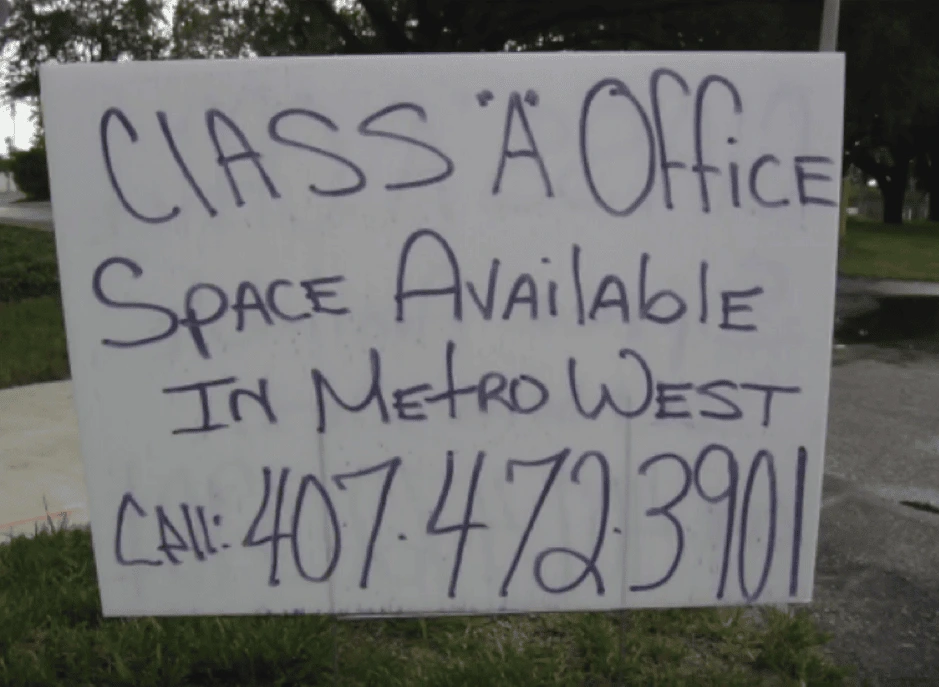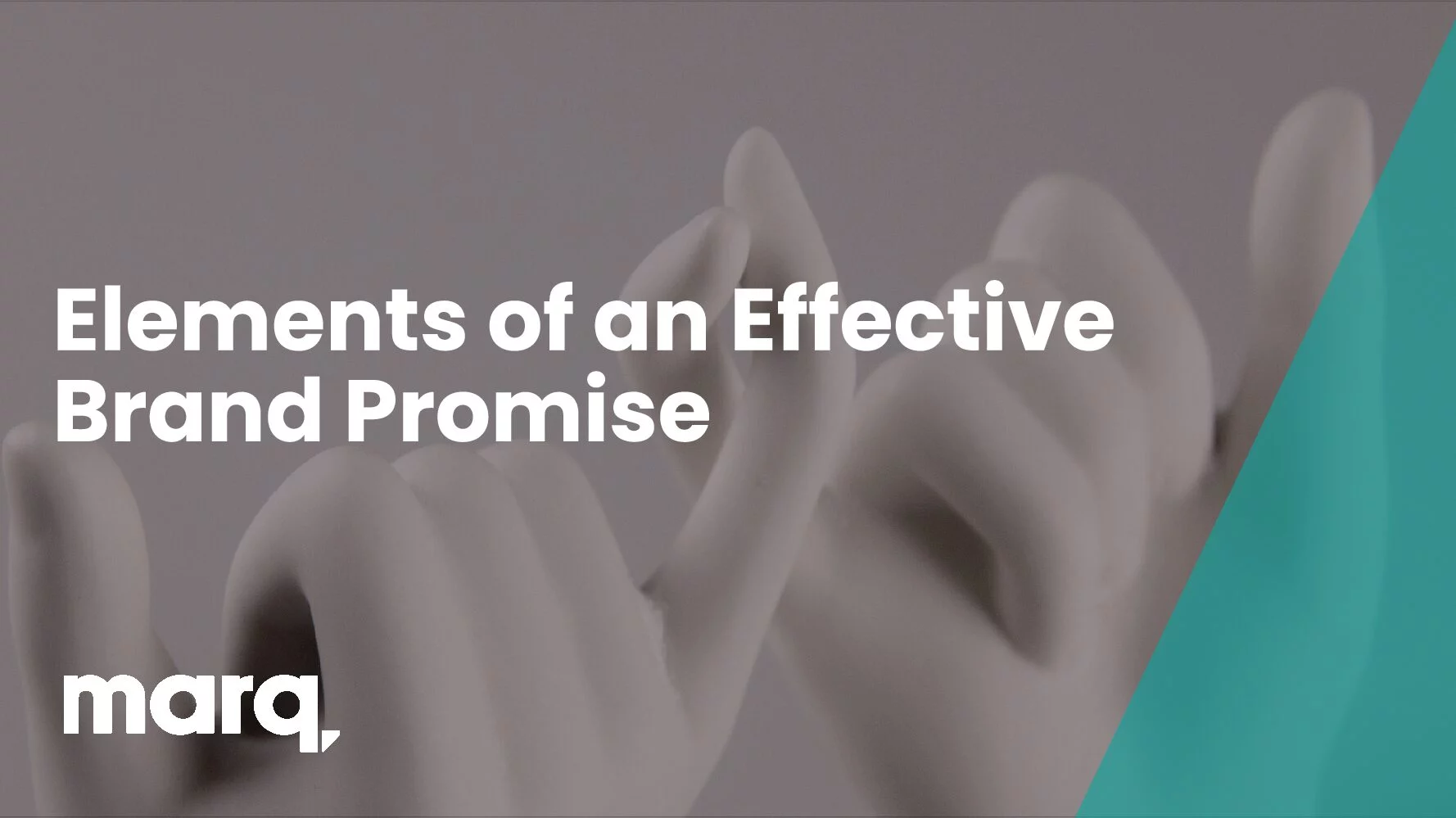Here’s a promise: by the end of this article you’ll know exactly what a brand promise is and you’ll have plenty of examples that will help you have your own in a matter of minutes.
And there’s something more.
Related: An 8-step brand development strategy
Are you ever a bit confused about some of the marketing jargon out there?
Maybe you’re wondering:
- Is a brand promise the same thing as a tagline?
- Is it a word? Is it a phrase? Is it a 30-second pitch?
- Is there a difference between a brand promise and a unique value proposition?
I understand—everyone is using these terms with their own interpretation, right?
Fortunately, by the end of this article, everything will be clear. Promise.
Ready? Let’s dive right in!
What is a brand promise?
What’s the first thing that comes to your mind when I say Las Vegas? Was it something related to gambling, poker, blackjack, casinos or nightlife?
What’s the first thing you think about when I say Volvo? Was it something related to safety?
What’s the first thought you have when I say Mercedes? Was it something about quality and luxury?
You see, a brand promise is your perception of how you feel about a brand.
A brand promise is not a tagline.
Do you know the tagline of Mercedes or Volvo?
Probably not, right? But you know what their promise is.
You know that they promise you a luxury car (Mercedes) or a safe car (Volvo).
And there’s one more important thing. You know that they can keep their promises.
But, this is starting to sound like a unique value proposition, right? You promise something that only you have, and people will remember you. Or… is it?
Let’s see.
A brand promise is not a unique value proposition (but it incorporates one).
A unique value proposition (or a unique selling point) basically says:
- What you do
- Who you serve (or sell to)
- How you solve your customer’s needs
- And how you’re different.
Here are a couple of examples:
For {target} who {statement of the need or opportunity}, {Name} is {product category} that {statement of benefit}.
For content marketing companies who always have tight deadlines, ContentBoost is the content creation software which helps teams produce long-form articles, blog posts and ebooks on high-speed because it lets you build on each other’s ideas.
We help X do Y doing Z
We help content creation teams write better and faster by dragging and dropping research into documents.
We do X, but the difference is {primary differentiator}
We help content teams put all their content together, but the difference is that writers are also able to pull from that database and add to a library of bite-sized research.
Is this enough to have a strong brand promise? Let’s do a quick imagination exercise.
You and I don’t know each other.
But let’s say we randomly meet at an event, and I tell you I recently started a company that creates the safest cars on the road ever — even better than Volvo.
Basically, let’s say I just tell you my unique value proposition. A simple statement that says what my company does for who and how we’re different.
Would you believe me? Probably not, right? You’ve just met me.
And if someone asked you half a year later what the top 3 safest car brands are, would you mention my company?
There’s probably 0 chance you have that instant association between my company and your safety. This is why a unique selling point is different than a brand promise.
So what is, in fact, a brand promise?
There are two kinds of brand promises: an implied one and an explicit one
For instance, an element of every airline company’s brand promise is that they will get you to your destination safely. You don’t have to promise that any more. It’s an obvious (implied) brand promise.
Let’s take another example.
A restaurant’s implied brand promise will be that they provide great food with great service. No one comes to a restaurant expecting an awful customer experience, right?
But, there are also other elements that are explicitly stated.
For instance, when FedEx first started out, they promised you that they “will get your package to you by 10:30 am the next day.”
This is a promise that 1) was different from what everyone else had, and 2) was also something people might not expect, so they stated it explicitly.
Here’s the most simple, short and down-to-earth brand promise definition:
A brand promise is what you instantly KNOW and FEEL about a brand.
But how do you create such a lasting brand purpose or promise? How do you get people to instantly associate your brand with a certain quality like safety, quality, luxury, or whatever you want?
How do you move people from being total strangers to trusting your brand?
You will see that a brand promise is, in fact, more like a process — and it’s part of the whole branding strategy and brand identity.
Let’s see what the essential elements you should take into consideration are if you want to create an effective brand purpose that people will remember.
1) Start with a promise that you would tell a friend
If you want people to remember something about your brand, it first must be clear for you what that something is.
And the way you do that is by actually telling it to a friend or an ideal customer.
Let’s do a short exercise that will help you create a first draft of your brand promise.
Imagine you’re drinking a coffee with your core customer. He is right in front of you, and he’s the best buyer in the world:
- He’s already researching the kind of products/services you sell
- He has the money
- He’s willing to spend it
- He isn’t overly skeptic
- He’s already made similar purchases in the past
And now, he is just waiting for a reason to buy something from you.
What do you promise him in exchange for his hard-earned money?
It all boils down to this:
If you give me X amount of money I PROMISE I will give you _____ {this product / service} which will help you do / achieve / become _____ {introduce benefits} better than ____ {other services/products} because ____ {why you’re unique}.
Let’s say you’re the marketing manager or the CMO of an electronic e-commerce business.
Here’s an example of what your brand promise can be:
If you give me $1000, I promise I will give you this super-fast, octa-core laptop which will help you simultaneously work on however many engineering programs you want (without buffering or crashing).
What makes us unique is that we’re the only ones who use quantum computing, and we’re also the only ones who offer 10 years’ guarantee on every single product you buy from us.
You see, the brand promise isn’t a tagline. It isn’t “Just do it” or “Think different.” Because that’s not what you would say to a person face-to-face.
And this doesn’t have to be limited to a single product or service. It can be also adapted to a more general promise.
Let’s take the example above and apply it to the company level.
If you choose to do business with us, I promise you’ll never have to suffer from having a dysfunctional device, whether it’s a phone, laptop or any other electronic device.
This is because we’re the only ones who have developed special partnerships with all our suppliers, and we’re giving you not just a 10-year guarantee for almost any product you get from us, but free full service and support for the period your device isn’t functioning properly.
But is that all? This is the brand promise?
What if someone else comes along and says the same thing — or what if you don’t have something so unique to begin with?
What if, for instance, you want to create a brand promise for a restaurant, but you don’t have any special dishes?
This is how you start developing a more effective brand promise.
If you want people to remember it and instantly associate the quality you want — like great customer service, for instance — you also need the next elements.
2) Create a mental movie in people’s minds by making everything ultra-specific
One day, a friend of mine decided to do a little experiment:
He randomly called about 10 local pizza shops. He said something like: “Hello, I want to come to your place with 10 friends, but one of the guys insists on going to another restaurant. I need your help to convince him: why is your pizza better?”
Here are just some of the responses he got.
Response #1: (Annoyed) “Hmm… Not sure. It’s your call.”
That’s how not to make a promise…
Response #2: “We use high-quality ingredients.”
This sounds good, but what does quality mean? Plus, do you know anyone who says they don’t use high-quality materials, no matter what they’re selling?
You see, this is an implied brand promise. Quality, great customer service, great food, etc.
You don’t go to a restaurant and expect bad food, right?
So, there must be a better way to make a brand promise. Let’s look at another response my friend got.
(Full disclosure: the person who answered this time was actually the owner of the restaurant.)
Response #3: “Oh, well, we use high-quality ingredients. For instance, our sauce and flour are made with true Italian ingredients.
Take the cheese, too. It’s not just cow-milk mozzarella. Instead, we use a buffalo-milk mozzarella.
And there’s also the sauce. Sir, we don’t use pre-prepared sauce. We use genuine San Marzano tomatoes right from Italy!
We’ve been handcrafting pizza for 5 generations. With every crispy bite you take, you taste 90 years of pizza-baking mastery!”
You see, the promise is really simple: You get tasty, Italian pizza with high-quality, authentic ingredients, and you can be sure it’s good because they’ve been perfecting it for generations.
See how it all changes when you actually put a picture in people’s heads about what those high-quality ingredients mean or what experience means?
Now, is this enough to earn a special place in people’s minds?
Well, it is a good start. But if you really want to get people to remember your brand promise, you need to apply element number three from our list.
3) Repeat it over and over again. Across all the channels.
By now, you’ve created the first draft of your brand promise.
You know what to promise if you’re face-to-face with your ideal client.
You also made it ultra-specific, and you can give people all the details on how you’re different and why they should choose you.
But, there are so many other brands that try to do the same. How do you get through the noise and get people to remember you?
Here is the simplest but most powerful thing you can do:
Repeat it as many times as you can. And keep it consistent across every communication channel you use.
Why is this so efficient?
Well, because each time you repeat your brand promise, you deliver it to people who might not have noticed it previously.
There’s more.
With each repetition of your core message, your audience gets more familiar with your brand, products & services, and company.
This leads to familiarity, to that feeling of acceptance.
Once people begin to accept your brand, and your promise, they also begin trusting you.
Ultimately, this opens the door to more sales with less resistance.
The bottom line is this: no matter how strong, unique or specific your brand promise might be, people won’t remember it unless you repeat it often.
How do you repeat a brand promise without annoying people? Here’s how.
4) Use the power of suggestion to make your brand promise memorable
How do you suggest to people what you want them to remember?
Metaphors, comparisons, analogies and stories are some of the most powerful persuasion techniques you can use. They’re like a backdoor to the human mind (see what I did here?), which make your ideas stick faster and longer than a rational explanation or affirmation.
By employing these little techniques, you can repeat your brand promise without annoying your audience.
For instance, here’s a visual metaphor used by Viagra when it began selling on Amazon.

As… bold as that was, you can still go a step further. Here’s a mind-blowing example.
Red Bull’s promise is that it gives you the energy to achieve whatever you want. It will help you do extraordinary stuff because it increases your performance, concentration, reaction speed, vigilance, etc. It empowers you to go beyond limits, right?
So, how could they express this better than a jump from the stratosphere?
During a 9-minute fall, Felix Baumgartner set records for both the height of the jump and the speed of descent (830 mph!).
Who gave wings to Felix? Red Bull — the event organizer and company that made all this possible.
The bottom line is this: let people get the moral of the story. This is how you build that instant association between a certain attribute and a brand.
5) Keep your promises. Even in the little details.
You know what they say: trust takes years to build, seconds to break, and forever to repair.
It’s true for human relationships, and it’s true for brands, too.
You spend a lot of money to get people to finally believe in your promise, but if you don’t pay attention to the little details, it can all fall apart.
Here are some photos I’ve taken over the years that perfectly illustrate brand promise misalignments.
For instance, let’s say you’re boarding a plane and you see this:

The implied brand promise — that they will get you safely to your destination — is gone. In an instant.
It’s possible the plane was perfectly safe and the window wasn’t a threat to anyone’s safety, but the message communicated by this photo screams anything but.
Or, here’s a sign that I saw posted by the side of the road:

They might have a class “A” office, but they definitely get an F for design.
Based on this sign, would you truly believe they have an impressive office?
Or, let’s say you’re waiting in a doctor’s examining room and you see this:

Is this where a doctor should keep his thermometer sleeves?
I’m pretty sure that wasn’t a used cup — but if you think about it, the implied brand promise of any company is (or should be) attention to detail, clean supplies, etc. By failing to pick up on that, you could be sending harmful messages about your brand promise without even knowing it.
Now, let’s see a positive example of a brand promise.
FedEx’s core promise is that they will go to great lengths to deliver your package on time. And they have stories to prove that. For instance, a driver called Mike O’Donal single-handedly salvaged Christmas for one of his customers.
The customer found out just a few days before the holiday that he sent the package to the wrong address, and it didn’t reach its destination.
The package contained the only Christmas gift the customer could afford to give her daughter, and now it was in someone else’s hands.
So, the driver tried to retrieve the package. When the person at that address denied receiving it, O’Donal decided to play Santa Claus.

He purchased a duplicate gift out of his own pocket in time for Christmas Eve.
Through his actions, O’Donal did more than just replace a gift — he earned the customer’s gratitude and loyalty.
A quick recap on how to create a brand promise that sticks in people’s minds
A brand promise is like the moral of the story. Just like in the fairy tales, the moral was rarely directly stated or called out, but it’s implied through every aspect of the story.
For instance, nowhere in Pinocchio does it say that lying makes you look bad — but in the end, that’s the message we take with us.
So, here are the most important elements of a successful brand promise:
- Tell your brand promise as you would tell it to your ideal customer face-to-face.
- Describe your promise in detail. What does “quality” actually mean?
- Repeat it across all the channels. Repetition works.
- Use the power of suggestion: start with analogies, comparisons & metaphors.
- Make sure you keep your promises, even when it comes to the little things.



